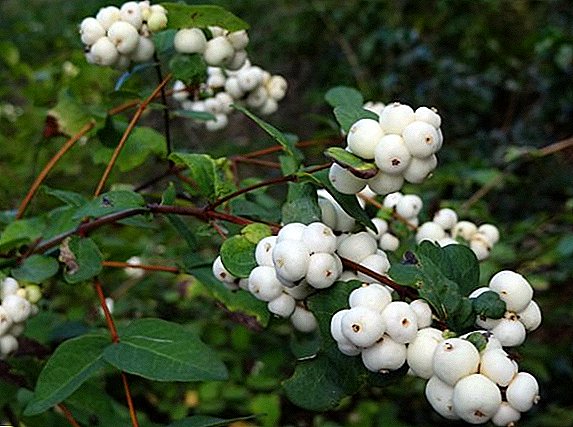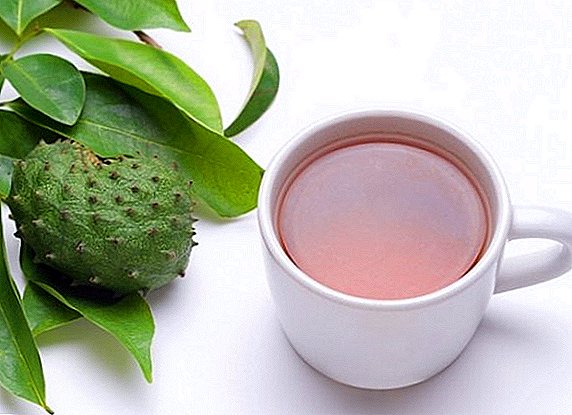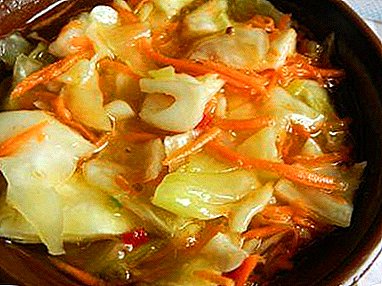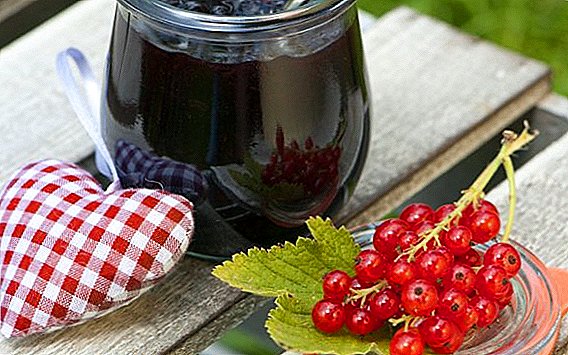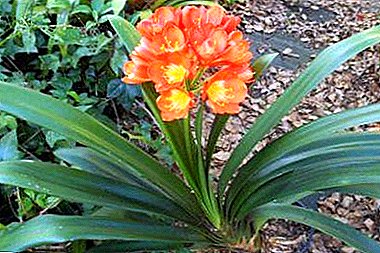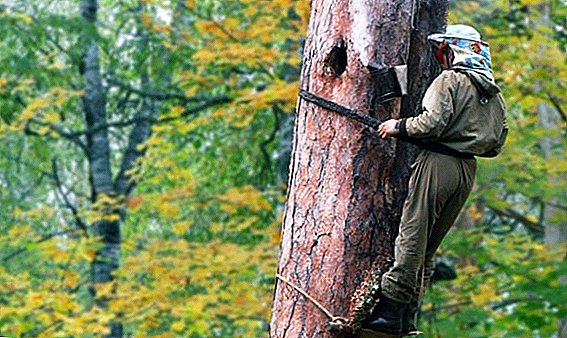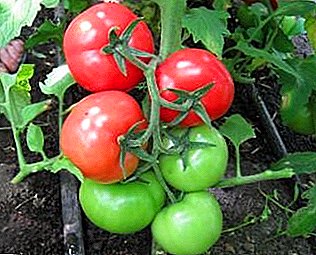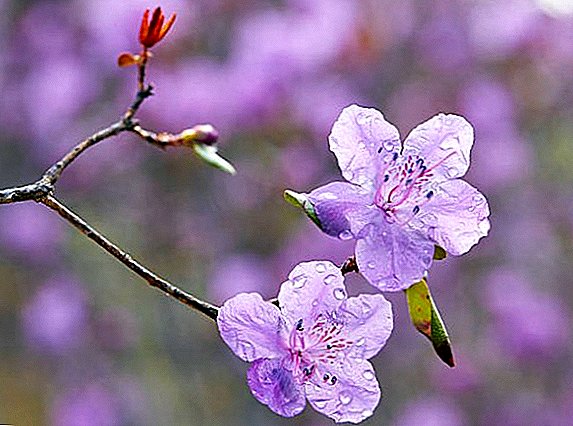 All the epithets will not be enough to convey the beauty and elegance of blooming rhododendron. He needs to be seen. And anyone who has ever had the opportunity to admire the shrubs in their natural habitat, will certainly ignite a desire to acquire such luxury on his site. Besides, it is not difficult to grow a Dahurian variety in Ukrainian gardens. The main thing is to provide the plant with suitable conditions and competent, timely care.
All the epithets will not be enough to convey the beauty and elegance of blooming rhododendron. He needs to be seen. And anyone who has ever had the opportunity to admire the shrubs in their natural habitat, will certainly ignite a desire to acquire such luxury on his site. Besides, it is not difficult to grow a Dahurian variety in Ukrainian gardens. The main thing is to provide the plant with suitable conditions and competent, timely care.
About the preferences of the Daurian rhododendron, favorable and destructive factors for it will be discussed further, as well as in the article you will find photos of the shrubber and the recommendations of the professionals.
Botanical description
Daur rhododendrons are genetically adapted to conditions temperate latitudes, as in the wild spread to the Altai highlands.  But because of the polymorphism of the species, scientists still cannot name its exact ranges. The fact is that many forms of shrubs are very close to the Sikhotinsky, small-leaved and Lebedur varieties.
But because of the polymorphism of the species, scientists still cannot name its exact ranges. The fact is that many forms of shrubs are very close to the Sikhotinsky, small-leaved and Lebedur varieties.
Did you know? Rhododendron is translated from the Greek language means "pink tree". Obviously, the name is associated with the color of the shrub, which during flowering is thickly covered with bright inflorescences. And the plant has nothing to do with roses.
In Asian lands, wild rhododendrons often occupy a large area of wasteland, forming a solid pink carpet of petals. Some specimens are found on gravelly, rocky lands, in deciduous and coniferous forests. Also they are in North America, New Guinea, in Australia.
For unknown reasons, Slavic peoples began to call Dahurian rhododendron wild rosemary. Botanists discard any relationship between these plants. The only thing that unites them is belonging to the Vereskov family. 
The heather family also includes: strawberry tree, azalea, heather, Erica, wild rosemary, cowberry, blueberry, cranberry, blueberry.
Within the Dahurian species, specialists distinguish several rhododendron forms. This explains the fundamental differences between plants. Some of them have tiny flowers and dwarf half-meter stalks, while others, on the contrary, are characterized by giant buds, which when opened reach twenty-centimeter diameter, and two-meter-long sprouts.
Combines all types of rhododendrons with a tendency to strong branching. As a rule, the bush consists of 25-40 brown shoots directed upwards with a light hairiness. Young branches are very thin and much darker.
Did you know? Honey collected from rhododendron has a laxative and hallucinogenic effect. The pioneers of these unpleasant side effects of the delicacy were the ancient Roman soldiers.
Foliage oval with rounded ends. Its upper side is glossy and dark green, and the back side is rough and lighter. On average, leaves develop up to 4 cm in length and 1 cm in width. They appear after the bush blooms.  After flowering, rhododendrons do not lose their elegance, because their leaves change their color from bright light green to dark brown during the vegetative period. In November, they curl and fall.
After flowering, rhododendrons do not lose their elegance, because their leaves change their color from bright light green to dark brown during the vegetative period. In November, they curl and fall.
The most delightful part of the plant is lush inflorescencesthat in favorable weather conditions appear already in mid-April and delight the eye until the second decade of June. They are revealed simultaneously on the tips of branches and in the leaf sinuses, and attached to the shoots by tiny peduncles.
Buds are very similar in shape to bells. Each brush has about two dozen flowers with a diameter of up to 4-5 cm and a length of up to 3 cm. As if with enchantments it attracts bright, juicy scarlet, purple and purple shades of the petals.
After flowering in the cup, a small oblong boll is formed.
Important! Not all rhododendrons are recommended for home cultivation. Many of its species are pollen and nectar poisonous. They secrete andromedotoxin, which is detrimental to the central nervous system of a person. Intoxication is manifested by severe abdominal pain, irregular heartbeat, and involuntary contraction of muscle tissue. The development of further symptoms can be fatal.

Choosing a landing site
The beauty of rhododendron requires sacrifice, certain knowledge and patience. To please the moody shrub, responsibly approach the choice of a site for it. In this case, you need to take into account the lighting, soil features and even the neighborhood.
Ideally, the culture will suit a cozy area, where:
- no dominant drafts and northerly winds;
- there is enough sun, but not its direct rays;
- rain and melt water is not collected;
- groundwater is located no closer than 2 m from the ground;
- enriched with nutrients, moisture-permeable light substrates with high acidity;
- near there are no buildings that would create a long-term shadow;
- in the neighborhood, tall trees with surface roots do not grow (maple, alder, linden, weeping willow, birch are strong competitors to rhododendron, which deplete and dry the soil).
 If you miss at least one of the above nuances, the plant may stall in growth and stop flowering. In the worst case, a putrid lesion of its roots and death are possible.
If you miss at least one of the above nuances, the plant may stall in growth and stop flowering. In the worst case, a putrid lesion of its roots and death are possible.Important! To protect the gentle rhododendron from aggressive neighbors, which can deprive it of food and moisture, experienced gardeners advise to isolate the planting pit from the sides and bottom of the whole sheet of dense covering material.
The competent choice of saplings upon purchase
To avoid becoming a victim of scammers who, under the guise of rhododendron, they will sell you any rhizome, you need to make such purchases in specialized nurseries or garden centers. Do not hesitate to ask consultants (even if this information is known to you) about the features of the species you are interested in, its wintering, soil preferences, details of planting and care. If the seller does not possess this knowledge, it is better to find another agricultural complex. Beginners are advised not to be tempted by lush inflorescences and a variety of shades in breeding collections, but to begin growing rhododendrons with species. This is due to the genetic characteristics of the plant.
In the case of the Daurian rhododendron, its landing and care facilitate high winter hardiness, relative unpretentiousness and quick adaptation to the new conditions of the temperate climate zone. But the varieties derived from it require additional conditions and, accordingly, cause much more trouble.
Did you know? Rhododendrons can live for centuries. This feature of the tree is sacredly worshiped by the inhabitants of Nepal. They believe that the juice obtained from the plant and pickled flowers give beauty and longevity.
Experts pay attention to flower growers on rash purchases imported from Holland or Poland non-zoned adult seedlings. Often they are implemented in bloom. Of course, the shrubs will take root in the new place, but they will not be able to spend the winter.  The fact is that European technology for large-scale production of seedlings is based on hydroponics. This means that they are cultivated at a forced rate in a special solution without the participation of the soil. Such vegetation is designed for a milder climate and completely not adapted to the frosty winter. Even seasonal transplanting into a pot will not save the flower from the cold, since dryness of the flat air and the hardness of tap water will contribute to the pot.
The fact is that European technology for large-scale production of seedlings is based on hydroponics. This means that they are cultivated at a forced rate in a special solution without the participation of the soil. Such vegetation is designed for a milder climate and completely not adapted to the frosty winter. Even seasonal transplanting into a pot will not save the flower from the cold, since dryness of the flat air and the hardness of tap water will contribute to the pot.
It is better to buy young seedlings, which are about 2-4 years old. Be sure to ask the sellers how the sprout was obtained. If the seed, then its height to the age of three will reach no more than 15 cm. And this suggests that the rhododendron was grown on the open ground, and not in greenhouse conditions. Therefore, it is adapted to the harsh weather.
Did you know? In Asian forests can be found rhododendrons, whose height reaches 30 m.
If the seedling is derived from a cutting, its height will be about 25 cm. This copy will be different stocky and increased bushiness. Branching begins, as a rule, directly from the root collar.  When all the information about the origin and characteristics of the seedling is collected, you can proceed to inspect its stems and root system. You need to choose strong and viable samples, which have whole roots and straight, even sprouts. There should not be any spots, tumors, nodes or mechanical damage on the seedling.
When all the information about the origin and characteristics of the seedling is collected, you can proceed to inspect its stems and root system. You need to choose strong and viable samples, which have whole roots and straight, even sprouts. There should not be any spots, tumors, nodes or mechanical damage on the seedling.
Note the presence of putrid and moldy patches on the rhizome. When they are detected from the purchase should be abandoned.
Check the freshness of the root processes. To do this, make a small scratch. The shown light wood testifies to qualitative landing material. This rhododendron can be bought.
Flowering shrubs such as lilac, hydrangea, viburnum buldenezh, rose, forsythia, spirea, kerriya, chubushnik, astilba, euonymus, buddleya, and bubble tree are perfect for decorating the site.
Stepwise landing process
Rhododendrons are best planted in the spring, so that their root system is strong and has managed to adapt to new conditions, and the crown is prepared for winter. Exceptions are only instances with a closed root system.
Important! After planting a young rhododendron, its root collar should rise several centimeters above the ground. Otherwise, the roots will rot. Experienced gardeners are advised to cover this place with a small hillock of land, so that when watering as a result of subsidence of the soil around the trunk there is no crater. After all, it is fraught with water stagnation and fungal infections.
Experts advise to carry out this process according to clear instructions:
- When digging up the ground in autumn, dig a landing hole. Its dimensions should be within 50 cm width and 70 cm depth. If for some reason it was not possible to carry out the preparatory work in the fall, be sure to do it a month before rooting the seedling.
- Lay out the bottom of the deepening crumb broken brick or rubble. Using the last drainage option, make sure that no lime elements get into the pit. The fact is that lime promotes alkalization of the substrate, which has a very adverse effect on the Dahurian rhododendron. It is desirable that the drainage layer was from 15 to 20 cm.
- For mass plantings, keep between the neighboring plants a distance in the range of 70-80 cm. And for tall crops, leave two-meter intervals.
- Pour the prepared soil mixture beforehand into the drainage (the pit should be one third filled). On heavy loamy areas, it is better to use a special purchased substrate for azaleas, and in all other cases it is enough to mix leaf ground, peat and coniferous wood. Preparing the mixture in the ratio of 3: 2: 1.
- Then add 70 g of mineral complex fertilizer to each well and mix well with the ground.
- Cover the hole with a dark plastic film, securing its edges, and leave to form a favorable microflora inside.
- When the earth warms up and a stable warm temperature recovers outside, rooting can be carried out. All structures from the wells need to be removed and watered until the earth absorbs moisture.
- If the seedling was purchased in a container, it must be watered properly. And for 12 hours, specimens with an open root system are dipped into a container with distilled water at room temperature, to which growth stimulants are added (“Kornevin”, “Emistim”, “Ecosil”). Then it is treated with a clay mash that will protect the roots from drying out.
- A seedling is lowered into the prepared pit, its roots are straightened and covered with soil mixture from peat, deciduous soil and coniferous humus.
- The plant is watered again and the soil is thoroughly tamped in order to fill up the voids formed between the root processes. Otherwise, the shrub does not take root.
- Check out the landing is always necessary for the formation of pristvolnoy wells and its mulching. As mulch for Dahurian rhododendron, coniferous sawdust, bark or hairpins, which promote soil oxidation, are ideal.




Did you know? The famous tea "Labrador" consists of foliage and rhododendron petals. Some nations use young plant biomass in salads and vegetable dishes. And folk healers of the East say about the healing properties of the shrub. According to them, it helps to get rid of rheumatism, infectious and cardiovascular diseases.
Use in landscape design
This question will not cause difficulties even for beginners. You do not need a decade of baggage design experience to find the use of a beautiful rhododendron in the garden. Truly, it will look spectacular everywhere. The main thing is that it should be comfortable to develop.  But if you are prone to perfectionism, the perfect picture on your site will help to create following recommendations:
But if you are prone to perfectionism, the perfect picture on your site will help to create following recommendations:
- In flower ensembles, always consider the tonality of the buds and the period of their disclosure. It is desirable to harmonize colors, and bloom in the garden lasted forever.
- Daursky species of rhododendron is perfectly combined with coniferous plants. In addition, in such plantings benefit all cultures. The deep root system of firs, cedars, thujas, pines, cypresses and larch trees does not prevent the blossoming neighbor from developing, thus creating him a comfortable penumbra.
- When arranging group plantings, it is desirable to take into account the natural habitat of neighboring crops. Best of all, the "rosewood" fit junipers and ferns.
- Shrub comfort is provided in rock gardens, where a rocky atmosphere close to natural is created. In this case, as neighbors, the plant needs to select undersized crops. On the alpine hills, rhododendrons are perfectly combined with heather and gentian.
- In large areas, in all respects suitable for the cultivation of rhododendrons, the hedge of flowering shrubs looks spectacular.
- In the design environment, combinations of yellow, orange, cream and purple tones are considered successful. And also it is good to assemble scarlet, violet, purple and white shades.
- Desired neighbors for rhododendron are bulbous flowers: lilies, tulips, saffron, daffodils.
- Daurskoy variety can decorate the lawn, draw an alley or a curb.

Important! Rhododendrons begin to bloom from the age of three.
Care Tips
Competent selection of the site for planting and quality seedling - only half the success in growing rhododendron. Botanists warn about the requirements of a thermophilic and at the same time very winter-hardy culture. If you take them into account and in time to please your blossoming pet, your garden will receive invaluable decoration for many years.
Watering
Dahurian variety of "rosewood" is desirable to moisturize 2-3 times a week. Shrub does not like excess moisture. Excessive watering you only hurt him. Therefore, keep an eye on the state of the trunk circle and the presence of mulch on it.
Remember that hard tap water has a bad effect on culture. Therefore, experienced gardeners always soften it with a small amount of acetic or citric acid (100 g per 10 l). But as an alternative, it is advised to stock up on rainwater. In any case, watering can be done only when the liquid is settled and heated. Under each adult bush is recommended to pour it into 2 buckets. It is necessary to strengthen moisturizing procedures in the heat and in the autumn, before the onset of cold weather.
Important! Experts advise periodically to add sulfuric acid to water for irrigation. This is done to support the acidic environment of the substrate. The amount of substance added to water depends on its hardness. With the right concentration, the pH of the mixture will be 3.5-4.5. You can check it with a litmus strip.
Weeding
Removing weed plants from the garden is not a silly requirement of aesthetes. In fact, such thickets worsen the nutrition of cultivated flowers. And in the case of the Daurian rhododendron, weeds are the worst enemies of the shrub, because they deprive its surface root system, which are necessary for the development of beneficial trace elements.
Do not forget to monitor the pristvolnymi holes. After watering unnecessary vegetation will appear in them. Therefore, regularly loosen these areas with a sapka. This will remove the weeds and promote aeration of the roots. That's just wield the tool should be very careful not to damage the roots. Some gardeners do manual weeding and mulching holes. In this case, the layer of mulch should be at least 5 cm. 
Top dressing
Recommended to support the immune functions of the plant and stimulate its abundant flowering every 2-3 years root dressings. During the season they spend 2.
Important! Flowering buds that appeared on the young seedling in the first years after its rooting should be removed. This is done to ensure that the shrub is fully grown and does not dilute its resources for flowering.
The first procedure is relevant at the beginning of the growing season. To increase the biomass and the formation of flowering buds next year for each trunk make 10-12 kg of rotted manure or compost.Alternatively, you can use mineral complex fertilizers for azaleas.
In this case, up to 40 g of dry matter will be needed per square meter of the circle of the trunk circle. If desired, you can independently assemble the necessary components at this stage of tree development. To do this, you will need 2 parts of nitrogen, 1 part of phosphorus and one and a half parts of potassium.
The second feeding plan, when the shrub ottsvetet. Then his vitality is supported by phosphorus-potassium mixtures prepared in a 2: 1 ratio. If you decide to use mineral complexes, give preference to fertilizers containing the minimum amount of lime, phosphoric acid and chlorine.
Pruning
In this aspect, rhododendrons are not at all troublesome. After all, at the genetic level, they laid the development correct decorative form. Therefore, with a strongly expanded crown, only old branches with a diameter of up to 4 cm are pruned.
Did you know? The oldest rhododendron on the planet is 125 years old. It grows in a small Canadian town Ladysmith and is a favorite place for photographing lovers. Romantics named the tree Cynthia.
Some gardeners practice pinching the central buds on young shoots. According to them, it improves the decorativeness of the plant. They also advise rejuvenating old shrubs, cutting off part of the shoots at the level of 30-40 cm.
And next spring, in March, the same procedure should be done with the remaining sprouts. The cut must pass near the sleeping buds. At the end of the haircut all the "wounds" on the tree need to be treated with garden pitch or oil paint.
Experts insist on compulsory removal of all faded brushes. First, they spoil the decoration. And secondly, they interfere with abundant growth and future flowering. The main thing is to preserve the axillary bud on the upper foliage during their elimination. 
Wintering
The shelter of Dahurian rhododendrons for the winter is mandatory only for young seedlings. Feature of the form is good winter hardiness. Mature trees can easily withstand 30 degrees of frost. Therefore, unlike evergreen varieties, they do not require any preparation, except for abundant autumn watering and mulching of tree trunks. To do this, you can use peat or fallen oak leaves (pour at least 20-25 cm), this procedure applies to all bushes.
Important! For the winter, be sure to cover the root neck on all rhododendrons, regardless of their type and age.
Young seedlings need to cover the crown. It is better to do this not with sacking and spunbond, but with a house specially made from planks, which are covered with roofing material on top.
Hurry up with the preparation for the wintering is not worth it, because the 10-degree frost on the shrub is not terrible, but the rotted root collar can easily destroy it. Therefore, professionals advise to cover the plant in mid-November, and remove all facilities closer to March, when the earth warms up and can absorb moisture, and the weather will be cloudy outside. This is necessary so that the sun's rays do not burn the young foliage. 
Vegetative breeding methods
The owners of rhododendrons will confirm that when one shrub settles at the site, you certainly want to acquire the following and turn the yard into a continuous flowering canvas. Fortunately, to get new seedlings at home under the power of anyone who wishes. Easier to do it in a vegetative way.
Layering
Gardeners call this technology the most affordable and efficient. It consists in choosing a strong, viable stem and pinning it to the ground after making small cuts on the bark. The roots should appear in this place. To speed up the process, it is necessary to moisten the ground under the cuttings in time, and pour a small mound of substrate on the branch. It is advisable to do the procedure in spring or autumn.
Did you know? Europeans learned about rhododendrons more than one and a half thousand years ago, when flowering shrubs appeared in royal gardens. From there they spread throughout the Northern Hemisphere.
It will be possible to separate the young sapling from the mother bush only on second year after the done manipulations. This is done by cutting the branch and digging the slips. 
Cuttings
The method of propagation of Dahurian rhododendron by cuttings is used only for cultivated varieties. Planting material harvested in June, when the shrub is stronger after flowering. For reproduction, you need to cut healthy shoots up to 5-10 cm long. The blade of the knife should make an oblique even cut.
After that, all the leaves, except for the three apical leaves, are removed on the blanks, and under a 30-degree slope the cuttings are placed in a box with peat-sandy soil. Some housewives replace peat with agroperlite and add pine sawdust to the soil mixture.
It is important that the substrate is moderately wet. So do not forget to visit and water it. The box must be covered with glass and put in a warm place, where the temperature is maintained at 24 degrees Celsius.  After one and a half months, the cuttings can be transplanted into small containers. It is also desirable to transfer them to a cooler, but lighter, room. Experts recommend transplanting older rhododendrons to open ground only after 2 years. During this period, they will get stronger, and they will have more chances to spend the winter.
After one and a half months, the cuttings can be transplanted into small containers. It is also desirable to transfer them to a cooler, but lighter, room. Experts recommend transplanting older rhododendrons to open ground only after 2 years. During this period, they will get stronger, and they will have more chances to spend the winter.
Important! Young saplings of "pink trees" are very sensitive to the spring sun. To ultraviolet rays do not leave burns behind, prune the seedlings.
When you know about the nuances of planting and caring for this beautiful flowering shrub, you can safely breed it on your site. Here any words will be superfluous. I just want to just silently admire and once again admire.


